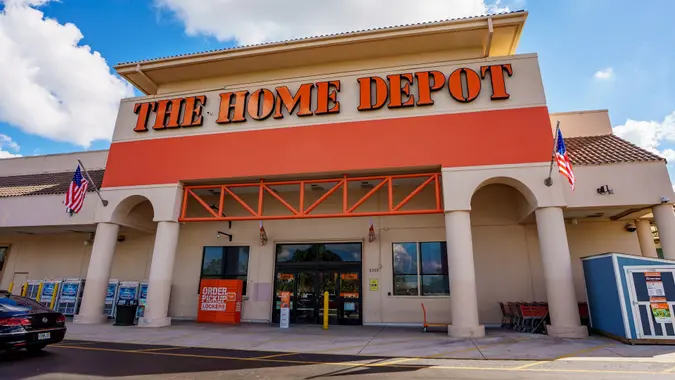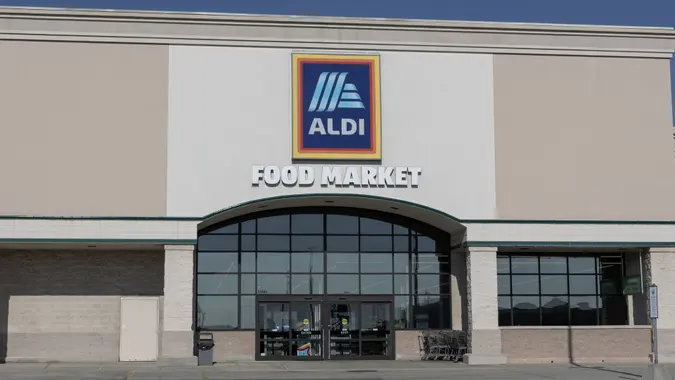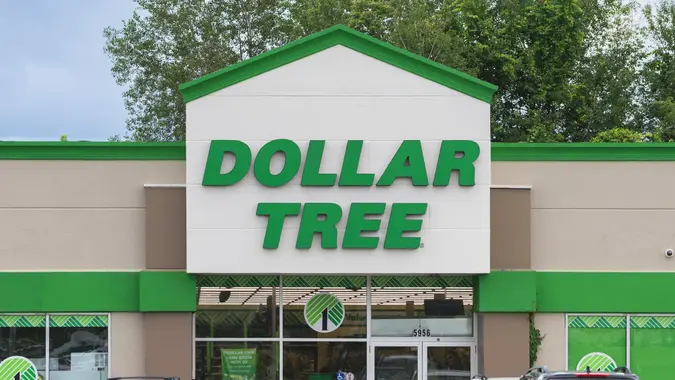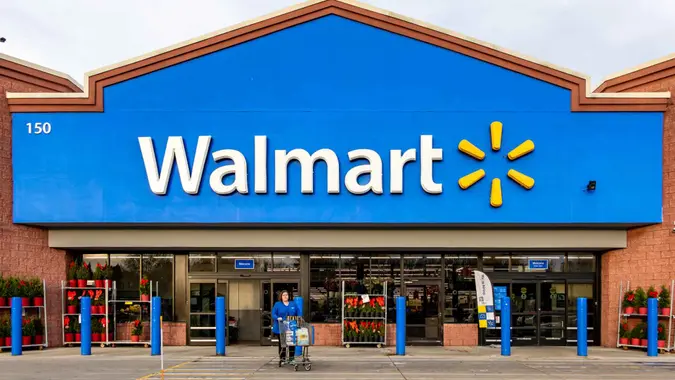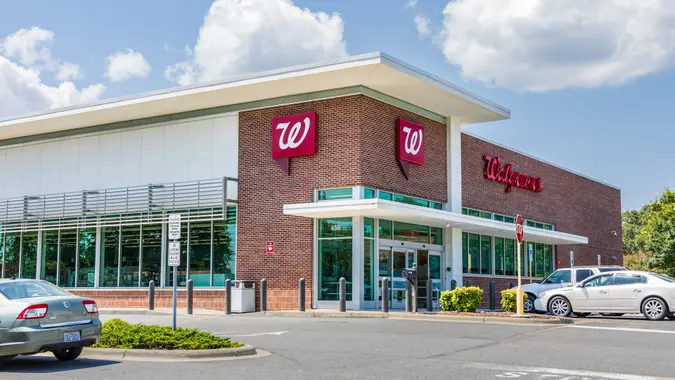Walmart Has the Cheapest Groceries: How Its Prices Compare to Target, Amazon & More

Commitment to Our Readers
GOBankingRates' editorial team is committed to bringing you unbiased reviews and information. We use data-driven methodologies to evaluate financial products and services - our reviews and ratings are not influenced by advertisers. You can read more about our editorial guidelines and our products and services review methodology.

20 Years
Helping You Live Richer

Reviewed
by Experts

Trusted by
Millions of Readers
Many Americans are opting to do their grocery shopping at Walmart. A 2023 GOBankingRates survey found that 37% of Americans do most of their grocery shopping at the retailer, making it a very close second to local grocery chains like Kroger and Publix (38%).
And it’s no surprise that Americans are flocking to the big box chain as the cost of food remains a top concern. That same survey found that 54% of Americans changed their spending on food over the past year, and 34% said that the cost of food was their biggest unexpected expense of the year.
As food costs remain top of mind, Walmart is providing a competitive edge over other retailers. A recent study from UBS found that Walmart’s grocery prices are significantly lower than prices at Target, Kroger, Amazon and Safeway/Albertsons.
The study compared the prices of 36 products across the five retailers and found that Walmart had the lowest prices on 22 of the items.
How Walmart Keeps Its Grocery Prices Low
Walmart is able to keep its prices lower than competitors thanks to its massive scale, explained Michael Lasser, equity research analyst at UBS.
“Twenty percent of all grocery sales in the United States go through Walmart in one way, shape or form, so it has unmatched scale in this category that it uses to generate purchasing leverage in all of the areas that it buys, and then it hands over those savings to the consumer in the form of lower prices,” he told CNBC.
“It’s a phenomenal model that has been working well for a long time, and now it’s turbo charging that by adding other elements to its business model, like advertising, third-party marketplace fees [and] membership fees, and this is providing further opportunity for Walmart to invest in areas like price.”
How Much Consumers Save by Shopping at Walmart
The UBS study found that a customer living in the Denver area spending $1,000 on groceries in Walmart in October would have generated $100 of savings compared with Target, and $200 versus Amazon.
Here’s a closer look at how Walmart’s grocery prices compare to its competition:
- Target’s groceries are 10% more expensive than Walmart
- Kroger’s groceries are 11% more expensive than Walmart
- Amazon’s groceries are 20% more expensive than Walmart
- Safeway/Albertsons’ groceries are 23% more expensive than Walmart
Lasser predicted that potential savings could even increase over time.
“[Walmart is] going to stick with what works,” he told CNBC. “They’re going to enhance the business model over time, and that’s going to make Walmart an even more formidable competitor to the likes of Amazon and others in the marketplace, but its core business of selling inexpensive goods at a very good value to consumers is not going away.
“It’s just going to enhance that with other revenue streams, expanding its assortment online, and it’s going to make an even already good value proposition to the consumer an even better value proposition.”
Walmart vs. Discount Grocery Chains
Lasser noted that the price competitive nature of Walmart specifically applies to brand-name goods, so it is still possible to find more affordable groceries at chains like Aldi and Lidl.
“In the hard discount model, those are typically branded goods, more private-label products, and a much more narrow assortment versus Walmart,” he said. “If you want to get unbranded goods, private-label products as a consumer, you can go and shop at one of those hard discount chains, but for dollar-for-dollar value right now, Walmart is amongst the leading players in retail.”
Survey methodology: GOBankingRates surveyed 1,021 Americans ages 18 and older from across the country between Oct. 12 and Oct. 16, 2023, asking 23 different questions: (1) How much did you spend on your pet in the last year?; (2) How much have you spent/are you planning to spend on Halloween this year?; (3) How much money do you spend on kid-related activities in a year?; (4) How much do you spend on average on your monthly utility bills (electric, heat/gas, water)?; (5) What spending/saving habits have you had to change in the last year due to inflation/rising prices? (Select all that apply.); (6) What was the biggest unexpected expense you had this year?; (7) How much do you currently spend on monthly car payments?; (8) Do you live in a single-income or dual-income household?; (9) In the past year, did you have to take on a side gig because of rising prices/inflation?; (10) How much do you bring home from your side job(s) each month?; (11) How much have your overall expenses gone up in the past year?; (12) What is your top financial priority to end 2023?; (13) What is the top way you’ve earned your money/gained wealth?; (14) Have you started financially preparing for 2024?; (15) How much have you spent on home upgrades in 2023?; (16) How will the resumption of student loan repayments affect your budget?; (17) How much do you currently owe in student loans?; (18) How much do you spend on yourself (not including housing, food, etc.) out of each paycheck?; (19) How much do you spend on online purchases per month?; (20) Where do you shop for groceries most often?; (21) Do you shop around for groceries to get better deals?; (22) What are you currently invested in? (Select all that apply.); and (23) What is the current value of your stock investments? GOBankingRates used PureSpectrum’s survey platform to conduct the poll.
 Written by
Written by  Edited by
Edited by 






